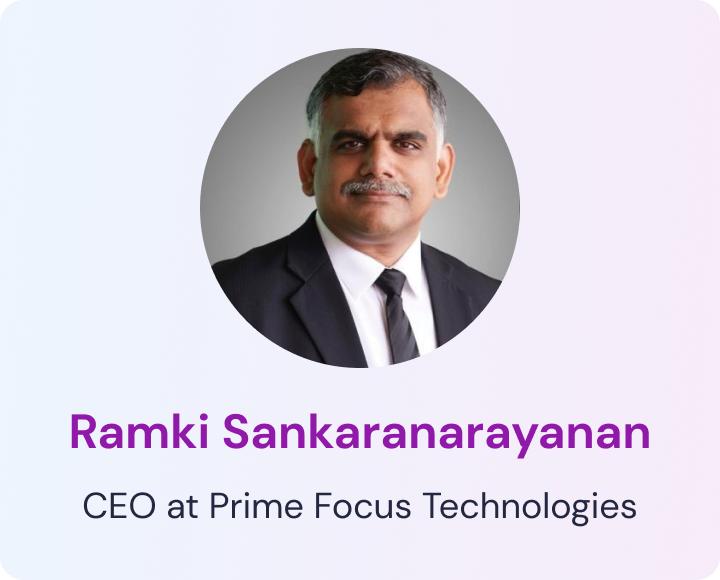Remember the last time you spent hours searching for that perfect clip or trying to organize your media library? It’s like looking for a needle in a digital haystack, right? Well, Prime Focus Technologies (PFT) is here with a super-smart metal detector. Their AI-powered metadata generation and smart tagging tools are changing the game in content management. Let’s dive into how they’re making sense of the content chaos.
In this article, we’re going to explore PFT’s approach to metadata generation and smart tagging. We’ll look at how their AI tools work, the real-world impact they’re having, and what this means for the future of content discovery and management. Whether you’re a content creator, a media executive, or just curious about the tech behind your favorite streaming service, you’re in for an eye-opening read.
Table of content
- Why Metadata Matters: The Unsung Hero of Content
- PFT’s Approach: Teaching AI to Watch and Learn
- The AI Magic: How Smart Tagging Works
- From Theory to Practice: Real-World Impact
- Overcoming Hurdles: It’s Not All Smooth Sailing
- Crystal Ball Gazing: The Future of AI in Metadata
- Wrapping It Up: The Big Picture
Before we dive in, let’s hear from Ramki Sankaranarayanan, CEO of Prime Focus Technologies, about their innovative approach to metadata:
Want more insights?
Check out our full interview with Ramki Sankaranarayanan for an in-depth look at how AI is transforming the entertainment industry!
1. Why Metadata Matters: The Unsung Hero of Content
Metadata might sound like a yawn-inducing tech term, but it’s actually the secret sauce that makes content discoverable and manageable. It’s like the labels on file cabinets, but for the digital age. Without good metadata, finding the right content at the right time is like trying to find your keys in a messy room – frustrating and time-consuming.
2. PFT’s Approach: Teaching AI to Watch and Learn
Prime Focus Technologies isn’t just slapping basic tags on content. They’re teaching AI to understand content like a human would – but faster and more consistently. Their approach combines machine learning with deep industry knowledge to create metadata that’s both accurate and useful.
3. The AI Magic: How Smart Tagging Works
So, how does PFT’s AI actually do its thing? Here’s a peek under the hood:
- Visual Recognition: The AI can identify people, objects, and even emotions in video content.
- Audio Analysis: It listens to dialogue, music, and sound effects to add another layer of understanding.
- Context Understanding: Beyond just identifying what’s in a scene, the AI can grasp the context and themes.
- Customization: The system can be trained on specific content libraries, making it smarter over time.
4. From Theory to Practice: Real-World Impact
- This isn’t just cool tech for tech’s sake. PFT’s smart tagging is making a real difference:
- Streaming Platforms: Helping viewers find content they’ll love, boosting engagement and reducing churn.
- Archives: Breathing new life into old content by making it easily searchable and reusable.
- Production: Speeding up editing and content creation by making it easy to find the perfect clip.
5. Overcoming Hurdles: It’s Not All Smooth Sailing
- Of course, implementing AI-powered metadata generation comes with its challenges:
- Accuracy: Ensuring the AI’s tags are consistently reliable across different types of content.
- Integration: Fitting new AI systems into existing workflows and technologies.
- Training: Getting teams comfortable with using and trusting AI-generated metadata.
6. Crystal Ball Gazing: The Future of AI in Metadata
What’s next for AI and metadata? Here are a few educated guesses:
Even smarter context understanding, grasping subtle themes and cultural references.
Real-time metadata generation for live content.
AI that can generate not just tags, but full content descriptions and summaries.
Join Vitrina Business Network
7. Wrapping It Up: The Big Picture
Prime Focus Technologies’ AI-powered metadata generation is more than just a cool tech demo – it’s a glimpse into the future of content management. By making content more discoverable, reusable, and valuable, PFT is helping the entertainment industry unlock the full potential of their content libraries.
As AI continues to evolve, we can expect metadata to become even more powerful, turning content chaos into well-organized, easily accessible digital libraries.
8. You Asked, We Answered: FAQs
Metadata is information that describes other data. For media, it includes things like titles, descriptions, tags, and categories that help organize and find content.
PFT’s AI can analyze video and audio content to automatically generate detailed, context-aware metadata, much faster and more consistently than manual tagging.
Yes, the AI can be trained on specific content libraries and tailored to understand industry-specific or brand-specific terminology and concepts.
Improved metadata leads to better content recommendations, easier search, and a more personalized viewing experience.
This article is part of our series on AI in entertainment. If you’re hungry for more, check out these related pieces:







































